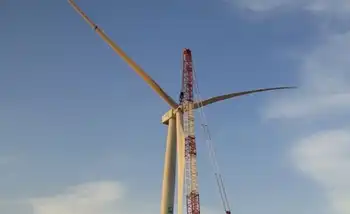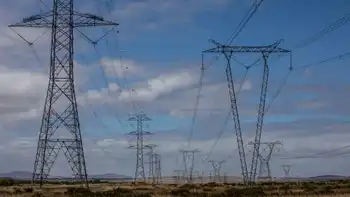New turbine generates power even at low speeds
Even with growing interest in wind power worldwide, the U.S. market for home wind turbines remains small, less than 0.002 percent of the national market. According to the American Wind Energy Association (AWEA), however, this small wind turbine market is expected to grow dramatically over the next four years — from a total of 80 installed megawatts in 2008 to 1,700 megawatts in 2013. Already, installations in 2008 — 17.3 megawatts — marked a 78 percent increase over 2007.
Small wind turbines produce 100 kilowatts or less of power.
Contributing to the trend is a provision in the federal stimulus bill, which limited the former $4,000 cap on the 30 percent tax credit that consumers or businesses could receive off of wind power installation costs.
Perhaps more significant, however, are the new technologies making home-scale wind turbines more practical, affordable and visually attractive. Whether the new technologies will be enough to overcome resistance from neighbors or the still substantial startup costs, however, remains to be seen.
One of the primary challenges in producing home-scale wind turbines has been figuring out a way to generate electricity from low wind speeds. In urban and suburban settings, a high density of nearby buildings and trees tends to block the higher wind speeds needed by conventional turbines. According to EarthTronics, 90 percent of the wind resources in North America are nine miles per hour or lower.
Shaped like a giant wheel, the EarthTronics home wind turbine — marketed as the Honeywell Wind Turbine through a licensing agreement with Honeywell — is significantly lighter than a conventional turbine due to its omission of a gearbox in the center.
Traditional turbines are turned when the wind pushes against large blades around a central gearbox, which in turn generates the electricity. Because the gearbox is so heavy, however, large blades and high winds are required for it to operate. In EarthTronics' Honeywell turbine, the gearbox has been replaced by a much lighter "direct-drive generator" based on magnets. This allows the turbine to generate electricity in winds anywhere between two and 45 miles per hour. Also in contrast to other turbines — which must be mounted on the ground — the Honeywell turbine can be attached to a rooftop.
EarthTronics will begin selling the Honeywell turbines in ACE hardware stores this fall. Each turbine generates 2 kilowatts of power and sells for $4,500, with an additional installation cost of up to $1,500. Even after installation costs, the company says, the Honeywell turbine costs only one-third as much as a traditional turbine.
The company estimates that a single turbine can generate 2,000 kilowatt hours of electricity per year, depending on climate and operating conditions.
The turbines have a six-foot diameter and weigh 95 pounds. The company has begun a program to train contractors and electricians in how to install the devices.
EarthTronics is not the only company taking advantage of direct-drive generators to jump on the home wind power bandwagon. According to the AWEA, a number of other companies are also planning to introduce building-mounted wind turbine systems, such as London-based Quiet Revolution. Private companies such as Mariah Power and Wind Energy have also invested in small-scale wind turbine technology, and Siemens has begun testing turbines without gearboxes to see if they could be adapted for larger-scale electric generation.
Related News

Saudis set to 'boost wind by over 6GW'
RIYADH - Saudi Arabia will become a regional heavyweight in the Middle East's wind power market adding over 6GW in the next 10 years, according to new research by Wood Mackenzie Power & Renewables.
The report – 'Middle East Wind Power Market Outlook, 2019-2028’ – said developers will build 6.2GW of wind capacity in the country or 46% of the region’s total wind capacity additions between 2019 and 2028.
Wood Mackenzie Power & Renewables senior analyst Sohaib Malik said: “The integration of renewables in Vision 2030’s objectives underlines strong political commitment within Saudi Arabia.
“The level of Saudi ambition for wind and solar…




